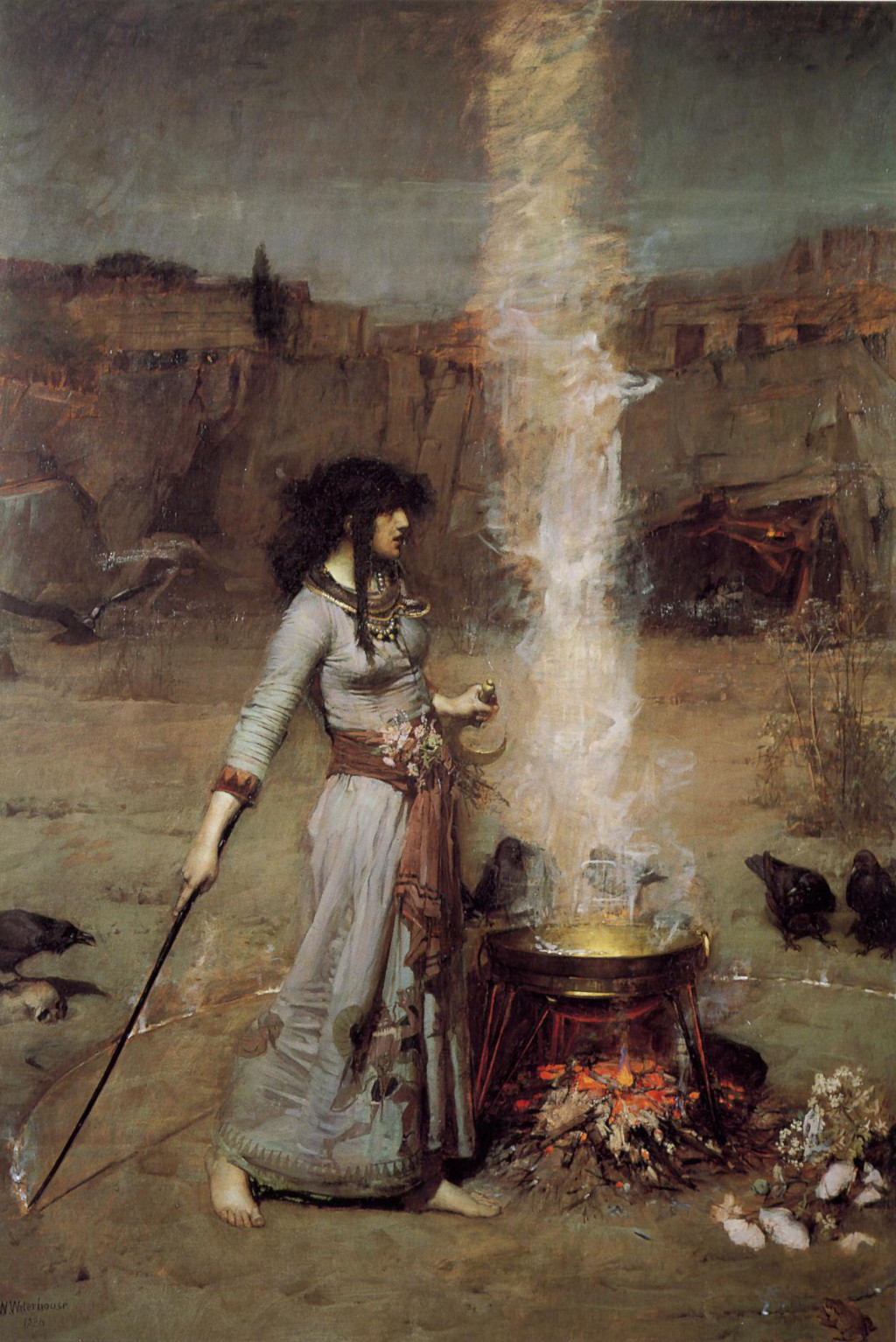Introduction
Many of the Pre-Raphaelite paintings were spread thinly around a large number of collectors because of the relatively low prices compared to some of the great European masters. It was only relatively recently that several larger collectors started to snap them up and group them back together.
The Tate is one such collector, though much of their collection was actually gifted by British owners upon death rather than purchased privately.One of the significant aspects of The Magic Circle is that is was Waterhouse's first submission to the Royal Academy having recently become as associate.
It was, of course, the first in a long line of successful submissions to this institution who were particularly keen on the style of Pre-Raphaelite art. The combination of elegant female models and charming artistic style was hard to turn down and the UK was gifted with several skilled members of this group around that time.
Description
The Magic Circle itself, to give the piece its title, is being drawn by the sorceress around her slim figure as she chants to the heavens. She is typically elegant and beautiful, consistent throughout Waterhouse's career. A solid looking cauldron responds by channeling smoke into the air, whilst darkness sets across the background to allow the main focal point to take centre stage.
The sorceress holds a wand in her right hand, as she drags it across the ground, creating a circle around her. She is dressed in an attractive, light blue dress which features detail around her waist and chest. There is also touches of brown embroidery around her sleeves and neckline.
Her hair hangs without the same care or tidiness as found in other Waterhouse portraits. Her left hand graps something which is hidden on her other side. It may be the handle of a sword, or perhaps a pot of something magical. She is bare footed, which again differs from most of the artist's other portraits.
Sorceresses within art are often portrayed as unattractive, dangerous women but Waterhouse continues his method of depicting women in feminine dresses, with attractive appearances. He keeps very close to his brand within this piece, but uses the surrounding environment to build this image of magic and darkness.
Mythology
Celtic mythology had taken plenty of attention around the 1880s and was enjoying somewhat of a revival, well beyond just the interest of Waterhouse. Mythology in general has long inspired artists, be it Celtic, Greek, Roman or perhaps something further afield.
Elements of fictional tales seem to fit well with art, particularly the more expressive styles. Waterhouse would always produce flattering, delicate depictions in line with the Pre-Raphaelite movement, even in this case when he was working with the theme of magic and darkness.
Large Image of The Magic Circle
Below we have included a larger image of The Magic Circle, as well as a study piece. Waterhouse always loved to fill his canvases with detail, most of which would be related to the specific theme of the artwork. Typically, this would be green fields and forests, but in The Magic Circle he chooses an alternative, darker atmosphere.
Comparing the final painting with the oil study below it, you will notice that very little changed. Waterhouse decided to alter the tone of the dress, and greater colour was given to the fire beneath the cauldron. Aside from that, it is almost identical, just with a greater development of the layers of oil.


 John William Waterhouse.jpg)
